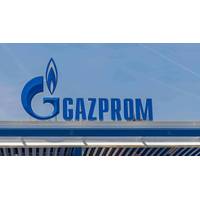The Bureau of Ocean Energy Management (BOEM) and Bureau of Safety and Environmental Enforcement (BSEE) today published a joint environmental assessment on the use of well stimulation treatments in federal waters off California.
BOEM and BSEE completed a comprehensive environmental analysis evaluating the potential impacts from the use of well stimulation treatments on the 23 oil and gas platforms currently in operation on the Pacific Outer Continental Shelf (OCS), and based on the analysis in the Programmatic Environmental Assessment (EA), issued a Finding of No Significant Impact (FONSI) from the use of specific well stimulation treatments in oil and gas activities in the region.
“Drawing on the best available science, the EA provides information and analysis on the use of well stimulation treatments in federal waters offshore California. The comprehensive analysis shows that these practices, conducted according to permit requirements, have minimal impact,” said BOEM director, Abigail Ross Hopper.
The agencies evaluated several categories of treatments, including hydraulic fracturing, a range of alternatives and all environmental resources that could potentially be impacted, and their analysis indicated no significant environmental impacts associated with any of the alternatives considered.
The resource areas evaluated in the offshore environment include water quality impacts from discharges of produced water, and the potential for associated impacts to fish and wildlife. Considering the low expected concentrations of well stimulation treatment chemicals and the protective nature of the EPA’s National Pollutant Discharge Elimination System General Permit and required monitoring of aquatic life, the analysis in the EA affirms that wastewater discharges from proposed well stimulation activities will not have a significant impact on the environment. Accidental releases of well stimulation treatment fluids have a relatively higher potential to cause impacts, but the probability of an accident occurring and the reasonably foreseeable size of a resulting release are so small that such accidents would not be expected to cause a significant impact.
There have been 24 well stimulation treatments (21 of which involved hydraulic fracturing) on the OCS offshore California between 1982 and 2014, and these were conducted on four of the 23 platforms. Reservoirs on the OCS off Southern California tend to be much more permeable than onshore reservoirs, and are already highly naturally fractured. Therefore, little permeability enhancement has been required for their development. As described in the scenario evaluated in the EA, the future use of Well Stimulation Treatments is expected to continue to be occasional rather than essential to hydrocarbon production from these platforms.
Randall Luthi, president of the National Ocean Industries Association (NOIA), said, “Today’s final EA report by BOEM and BSEE reaffirms what our industry already knows: there are no significant environmental impacts from offshore fracking.”
“Unlike the hyperbole released by many of the extreme environmental groups, the EA’s findings are backed by ground-truthed science and are a testament to the hardworking men and women of our industry,” Luthi continued. “They live, work and play at the same beaches, fishing grounds and coastal communities as millions of Americans, and are dedicated to a safe and environmentally sustainable workplace. Every day they live up to some of the strictest standards in the world – standards set by both the offshore industry and by the federal government.”
BSEE director, Brian Salerno, said, “Anyone familiar with our regulations understands that they not only address worker and operational safety, but also require the industry to function as environmental stewards. We consider vigorous environmental enforcement central to the Bureau’s mission.”
The EA was conducted as part of settlement agreements to resolve lawsuits regarding the Bureaus’ compliance with the National Environmental Policy Act, Outer Continental Shelf Lands Act and Coastal Zone Management Act. Pending completion of the EA, BSEE agreed to withhold approvals of future Applications for Permit to Drill and Applications for Permit to Modify involving hydraulic fracturing and certain well stimulation treatments on the Pacific Outer Continental Shelf. Under the agreements, BSEE will develop a mechanism to increase transparency in the permit approval process, as well as a method to alert the public of newly submitted complete permit applications for hydraulic fracturing or acid well stimulation.
BSEE and BOEM received more than 10,000 comments on the draft assessment during the 30-day public comment period that ended on March 23, 2016. After reviewing those comments, the bureaus revised the text of the final EA where appropriate, including amending the statement of Purpose and Need, clarifying the descriptions of alternatives and adding information on greenhouse gases and climate change.
“We hope this report quickly ends the moratorium on well stimulation techniques offshore California,” Luthi said. “Offshore energy is a vital source of jobs and revenue for both California and the U.S., and the sooner operations offshore California can resume the better.”




